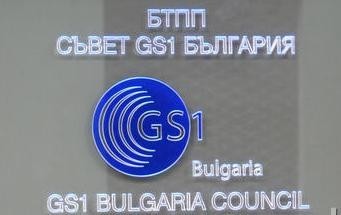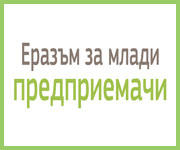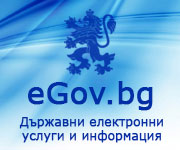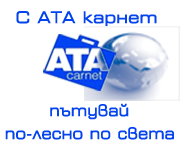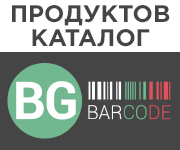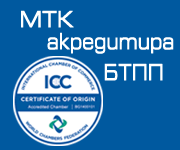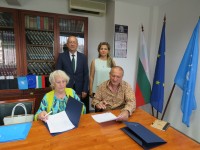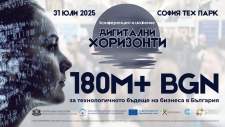Назад
Назад
Innovative GS1 healthcare solutions discussed at a conference in Amsterdam
Software generates patient identification wristbands to protect the patients’ interests Traceability of medicines and combating counterfeiting
On October 4th – 6th, 2011 the 20th Global GS1 Healthcare Conference was held in Amsterdam. It provided a unique opportunity for experts and main healthcare supply chain participants to meet and exchange experience in the implementation of global standards which increase supply chain visibility in healthcare, and ultimately improve every patient’s safety.
The Conference, which once started mainly as standards development working sessions, has now evolved to an event fostering innovation and implementation of GS1 Standards. What hasn’t changed and what makes this event unique is its “neutrality”. The event is not promoting specific solutions or specific viewpoints of one or the other side of the supply side. It encourages sharing best practices and inspirational ideas as well as an open discussion among all stakeholders.
Experts from various countries and healthcare sectors discussed the challenges and opportunities facing the healthcare supply chain, including pharma security, traceability and serialization, and Unique Device Identification (UDI).
During one of the first opening sessions, Dr. A Shetty, Vice President of Johnson & Johnson shared that the company wholeheartedly supports the use of GS1 Global Standards and applies the GS1 automatic identification system to all its products, pharmaceutical and medical articles. According to him, the main advantages of products barcode scanning are faster customer service and improved stock control and management.
The results of solutions already implemented in the Netherlands, as well as solutions which are in their initial phase of implementation, were presented. In the Netherlands there are 100 hospitals, 8 of which university hospitals. In 2011 the efforts in healthcare have been focused on the implementation of safety management systems, e-files, e-prescriptions and systems for rapid withdrawal of harmful medicines. The use of barcodes in the Dutch hospital ZGT resulted in 38% less mistakes and 7% cost reduction. The use of GS1 standards and barcodes helped improve medical products, patients and locations identification, allowed every step to be registered, and guaranteed better stock traceability and control.
During a patient identification demonstration, hardware and software solutions of various companies were presented, including wristband generation, printing of labels marking individual doses for treatment of a specific patient in a hospital, allowing to check whether the correct dose has been given to the right patient, generation of barcode labels to identify blood samples for testing, etc.
The existing tendency of automatization and robotization creates a need of harmonization and standardization.
For the first times Bulgarian representatives attended the Conference. The delegation consisted of three experts – two representatives of the Ministry of Health and one expert from GS1 Bulgaria.
For medical products the focus was put on traceability, while for medical tests – on Unique Device Identification (UDI) and data base creation. Representatives of the European Council,
US Food and Drug Administration (FDA), European Federation of Pharmaceutical Industries and Associations (EFPIA), European Directorate for the Quality of Medicines (EDQM), GHTF, manufactures of drugs and medical devices, representatives of US and European hospitals and labs took part in the Conference.
The eTAKT system of the intergovernmental organization EDQM was presented. It was developed in order to guarantee traceability of medical products and combat counterfeiting. The system is still in its development and testing phase. In October 2012 a workshop is envisaged during which the demo version will be presented and a simulation of the tracing of the lifecycle of a medical product will be made. Main element of the system is the Unique Medicine Identifier (UMI), which consists of GS1 GTIN, combined with information about the serial number, expiry date, batch number and identification number of the medicine in accordance with the national identification system (if there is one). The data is structured following the logic of the GS1 system and uses the respective applied identificators. UMI is generated by the manufacturer of the medicine and the information is inputted in the eTAKT system. If a specific medicine needs to be tracked, the competent authority or supply chain participant conducts a search in the system in order to identify the location of the product and to trace its movement. The system provides patients with access to product information as well – its interface allows a search by UMI.
In January 2011 the portal to the system for traceability of medicines “ITS” with or without prescription in Turkey was finalized. The project started in October 2007 with the support of the Ministry of Health of Turkey. In the first stage of implementation of the system, traceability is done on consumer package level – each consumer package is marked with a two-dimensional barcode symbol DataMatrix, which contains identification number (GTIN) and a serial number (SN).
Identification is generated by the manufacturer and is recorded in the so-called ITS center. All participants in the chain: retailers, hospitals, pharmacies, associations for reimbursed medicines send a message (notification) to the ITS center when the medicine is received by their structure. Next year, when the second stage of the project is expected to start, traceability on packed product level /box, pallet/ is planned. The idea and the decision to implement the traceability system in Turkey originated from the need to find a solution for traceability of reimbursed medicines. The time necessary to conduct a check-up of the movement of a product on the chain is about 0,2 to 0,3 seconds.
06.10.2011

 1 USD =
1 USD =  1 GBP =
1 GBP =  1 CHF =
1 CHF =  ISO 9001:2015
ISO 9001:2015